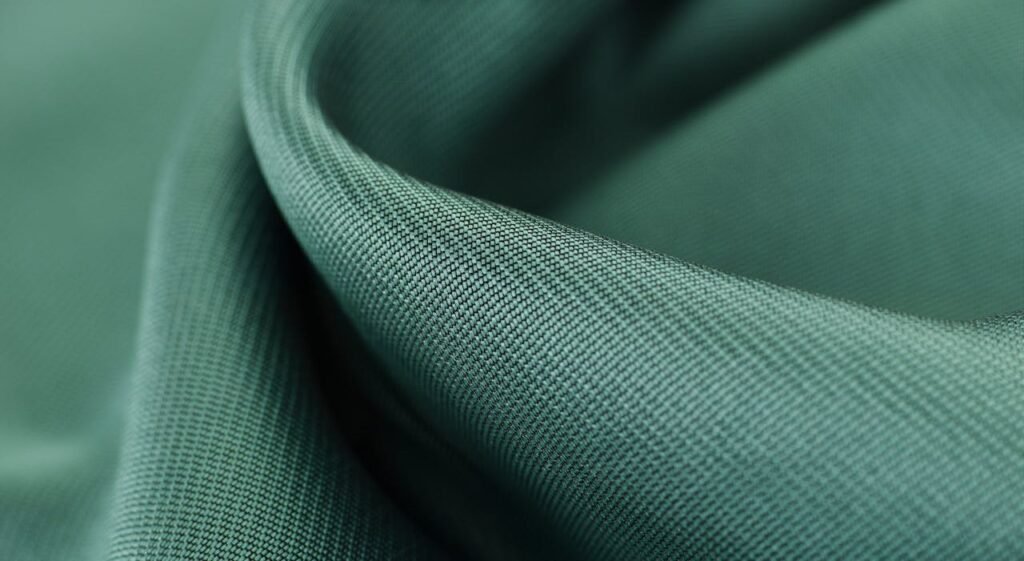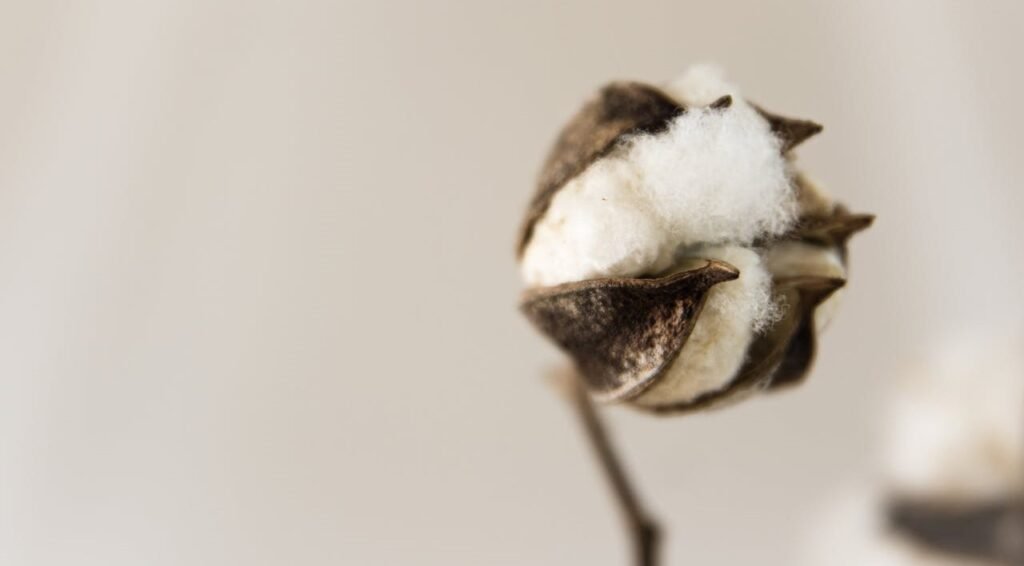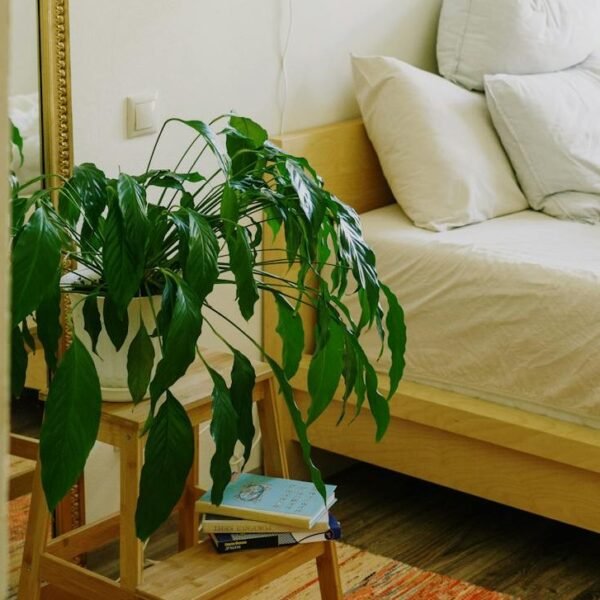Organic bedding is made with natural fibers without the use of pesticides or harmful chemicals. But why choose organic bedding? Is organic bedding worth it? Why is organic bedding better? Questions like these pop into our heads when it is time to choose between organic bedding or conventional bedding. That is why we decided to write this article where we discuss the benefits of organic bedding, how to spot quality organic bedding, and the types of organic bedding and their characteristics so you can make an informed decision.

Benefits of Organic Bedding
Organic bedding offers several benefits for both people and the planet compared to conventional bedding. Organic bedding can positively impact various aspects such as your health, sleep quality, and the environment. Therefore, choosing organic bedding can contribute to making the world a better and healthier place. Let’s explore together in more detail the benefits of organic bedding.
Sustainable
Reduce carbon emissions – CO2 emissions per hectare of conventional agriculture systems are around 48% to 66% higher than organic agriculture, meaning you can significantly reduce your footprint by choosing organic bedding.
Save water – Choosing organic beddingreduces water use, as sustainable cottonand flax plants, for example, use less water to be produced compared to conventional production.
Avoid water pollution – Since no pesticides and harmful chemicals are used to produce organic bedding, there is less water pollution. For example, organic cotton production can have a 98% lower water pollution impact than conventional cotton production.
Avoid soil degradation – Degradation of soils is an environmental issue that must be addressed. Conservation tillage on organic cotton farms is one of the measures to protect the soil.
Prevent ecosystem degradation and biodiversity losses – The use of pesticides and herbicides has a significant negative impact on ecosystems and biodiversity. By choosing organic bedding, you will be supporting organic farming that doesn’t use pesticides and herbicides, which cause ecosystem degradation and biodiversity losses.
Health
Conventional bedding materials can contain harmful chemicals such as pesticides, flame retardants, and synthetic dyes. Exposure to these chemicals has been linked to health problems like allergies, respiratory issues, and hormone disruption. By choosing organic bedding, you can avoid these exposures and have a healthy night’s sleep. Additionally, some materials used in organic bedding, like hemp, are hypoallergenic and have antimicrobial properties reducing the possibility of allergens and bacteria on your bed.
Comfort
Organic bedding is typically more comfortable and softer against the skin, providing you with a more enjoyable sleep experience. Organic bedding is sometimes stone washed for extra softness, and some organic materials get even softer with every wash.
Sleep Quality
Organic bedding improves your sleep quality because it is very breathable, allowing air to flow and preventing heat and moisture buildup. This breathability keeps you cool and comfortable throughout the night, helping to regulate your body temperature. Organic bedding also improves sleep quality by promoting a healthier and more comfortable sleep environment, as mentioned above. Therefore, organic bedding promotes a restful and deep night’s sleep and a refreshed wake-up.
Durable
Organic bedding is stronger and more durable as it does not go through chemical processes that weaken the fibers.
All seasons
The good thing about organic bedding is that you can find options for every season and every type of sleeper. If you are looking for bedding for summer or tend to feel hot while sleeping, linen bedding is a great choice as it is very breathable. It can also be used year-round. If you need something for colder seasons or often feel cold at night, flannel bedding is more suitable as it is warm and cozy. If you are looking for bedding to use all year round, then percale, hemp, or wool bedding are the best choices for you.
Biodegradable
Organic bedding is made with natural fibers without the use of pesticides and chemicals. Therefore, it is often biodegradable and does not contribute to land or ocean pollution.

How to Find Quality Organic Bedding
Not all organic bedding is truly organic, sadly, there can be some greenwashing in this industry. To ensure that the bedding you are buying is really free from harmful chemicals, you should look for trustworthy certificates such as GOTS and OEKO-TEX. These certificates ensure that the bedding is free from harmful chemicals and pesticides that you don’t want near you.
Now that you know how to find quality organic bedding, you can check out the article “9 Best Organic Bedding Brands” and choose your favorite!

Types of Organic Bedding
There are different types of organic bedding, all of which are free from harmful chemicals and pesticides that can harm your health and the planet. However, they may be more suitable for different seasons and feel different in contact with the skin. Therefore, we have prepared a list of the types of organic bedding and their various characteristics so you can make an informed decision based on your preferences.
Organic Cotton Bedding
Organic cotton bedding is made with cotton fiber that grows without harmful chemicals and pesticides. From cotton, you can have different fabrics such as percale, sateen, and flannel. Percale bedding is suitable for all-year use and feels cool, breathable, and crisp. Sateen bedding is also suitable for all seasons, is durable and breathable, and has a silky smooth texture. Flannel bedding is great for colder seasons as it feels cozy and warm.
If you feel like organic bedding is the one for you, check out this article “6 Best Organic Cotton Sheets”.
Organic Flax Bedding
Organic flax bedding is made with flax fiber that isn’t grown with pesticides and harmful chemicals. Using this flax, organic linen bedding is produced. The organic linen bedding gets softer with every wash and is very breathable, making it perfect for summer but also for other seasons especially if you often feel hot while sleeping. Linen is considered one of the most durable natural fibers and is very sustainable as it requires less water and energy to grow compared to cotton, for example.
Organic linen bedding is pretty hard to resist. If you are interested in organic linen bedding, check out this article “7 Best Affordable Linen Sheets for a Sustainable Bed”.
Organic Hemp Bedding
Organic hemp bedding is made without harmful chemicals or pesticides. It is soft, breathable, durable, and has temperature-controlling properties, making it perfect for all seasons.
Organic Wool Bedding
Organic wool bedding is made of wool that comes from sheep raised without pesticides being used in the pasture and on the wool. The wool also has to be processed without dyes, bleaches, and toxic cleansers. This kind of bedding is soft, durable, and has temperature-regulating properties.

Final Thoughts
After reading this article, you can now see the several benefits of choosing organic bedding, as it can have an impact on your health, your sleep quality, and the environment. You can explore the different kinds of organic bedding available in the industry and choose your favorite based on their distinct characteristics. Remember that to ensure the bedding is free from harmful chemicals and pesticides, you should look for trustworthy certificates like GOTS and OEKO-TEX.




